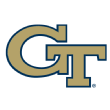As the opportunity for college athletes to profit off of their name, image and likeness fast approaches, football programs have been working diligently to partner with creative agencies and implement strategies that will help them stand out among recruits within the space.
We’ve seen arms races with facilities, weight rooms, jerseys, photo edits and shoes to see who can persuade recruits to pick their school. The next competition will almost assuredly be with name, image and likeness, as schools are actively pitching what separates the opportunities at their school from others.
“In college, the marketing piece has always been extremely important,” USC personnel director Spencer Harris said. “It doesn’t matter if I evaluated the right players if we can’t get them. The recruiting process is, ‘how do you get the player to choose you,’ so we’ve made such a big investment in this space, to support our players at the highest level and build their brands, and it’s a huge recruiting tool.”
Football programs have brought on full-time employees to focus on the marketing and branding side of name, image and likeness. Some have partnered with agencies including INFLCR, Opendorse and J1S to implement strategy and help with the logistics that will come along with endorsement deals and money coming in for the athletes.
USC, for example, built its own in-house creative lab called BLVD Studios that will educate the student-athletes on branding, provide a full-service platform to track content with metrics and help with brand management and narrative. The studio will help create content for their student-athletes that will include everything from logos, photos, videos and podcasts.
“Our pitch is everyone is going to want a piece of NIL — every student-athlete across the country, regardless of sport or position,” Harris said. “Everyone is going to want an endorsement deal. So, the question is, how do you separate yourself from your peers across the country so those endorsers choose you? How do you make yourself stand out?”
That’s the new pitch to recruits and the race to show the best opportunities and unique circumstances to maximize their value has already started.
Not every school will need to alter its pitch to recruits amid NIL, but here are a few schools that are trying to use the new rules to attract prospects looking to gain from NIL. We picked these four schools because they exemplify different approaches in different situations, from the big city to the only game i

It’s a no-brainer for the Trojans to use their location, the heart of Los Angeles, to their advantage. Having studios, entertainment, media, marketing agencies and everything in between located near campus is a huge advantage, and the staff is incorporating that into their plans for their student-athletes.
“I talk about LeBron (James) all the time. Why did LeBron come here (to Los Angeles) for that final move?” Harris said. “He was already on the mountain top of brand building, but he still wanted to see it explode off the court.”
Part of USC’s pitch is that the Governor of California signed the Fair Pay to Play Act on James’ HBO show, proving how important it is around California and Los Angeles.
Harris says the staff believes student-athletes are going to need three things to be successful with NIL: They’ll need to perform on the field; they’ll need the stage and platform to thrive; and they’ll need support from the athletic department.
USC has invested in its staff, the in-house creative team and with outside agencies to ensure the athletes are fully supported. More than that, they’ve embraced the atmosphere around them and the idea their student-athletes not only can thrive in Los Angeles, but that they should thrive there, and that it’s the athletic department’s job to help them grow that brand.
“We should be the best in this space, so we’ve tried to get ahead of it and be as future-oriented and creative and adaptive for when this comes to reality,” Harris said.
“It’s the reason we’re attracting recruits across the country.”

Georgia Tech may not have the biggest profile, but the staff thinks it has the tools to maximize its student-athletes’ value.
Head coach Geoff Collins is a proponent of students allowing to grow their individual brands while profiting off of name, image and likeness. In fact, Collins is rarely seen without his Waffle House cup or some sort of branding for the restaurant, and he is passing that mindset down to his players.
Similar to USC, Georgia Tech wants to use its location to its advantage. The staff believes it will be able to utilize some of the Fortune 500 companies in Atlanta to help student-athletes gain endorsement deals.
0:31
Sports labor attorney Jeffrey Kessler explains the significance of the Supreme Court siding with former college players in a dispute with the NCAA about compensation.
Some of those companies may look to use big-name players from Alabama or other schools, but Georgia Tech thinks its locality will give its players an edge. The athletic department already has relationships with companies like Delta, TNT, Accenture and NASA, as some of their players have completed internships with them.
Also like USC, Georgia Tech’s staff uses an analogy involving LeBron James, albeit in a different way. The staff compares James to soccer superstar Cristiano Ronaldo: Ronaldo has more social media followers than James, but James makes more money on social media because he engages in more product placement and branding content.
Georgia Tech’s staff is teaching players how to maximize engagement on social media and how to capitalize off of opportunities even if they aren’t at a school like Alabama or Clemson. Those schools, in Georgia Tech’s eyes, sell themselves on having the biggest fanbases. However, that doesn’t always mean their players will have the biggest social media followings.
The Yellow Jackets believe presence, engagement and having an alumni base with powerful CEOs and other businesspeople will create more LeBrons than Ronaldos.

Lincoln, Nebraska, is no Los Angeles, but Huskers coaches see that as an advantage.
There are no major professional sports teams in Nebraska, which means the college athletes are the main attraction. That’s a big deal for Nebraska’s student-athletes and the opportunities they could have from local companies and businesses around the state and surrounding areas.
With no other competition in the sports market, the Nebraska staff can pitch its student-athletes as if they were the pro sports teams. Local commercials, endorsements and everything in between would all be options for companies looking to add a recognizable face to their marketing repertoire.
Not every NIL deal has to be on a national scale, and if Nebraska can establish a well-structured and valuable local source of opportunities, it could create a mini gold mine for its players.
The product on the field does need to improve to maximize that value and the program needs star players to emerge to help drive interest, but the resources are there and the opportunity is there for businesses to get involved.

The Sooners are in a unique spot because they can combine aspects from a few different programs. There is a ton of local appeal, but thanks to what coach Lincoln Riley and his staff have built, there’s also national appeal.
Locally, the Oklahoma City Thunder is the only major sports team that garners attention for endorsements and sponsorships. The Sooners can capitalize off of the popularity around the state and into neighboring states for their student-athletes.
Quarterbacks sell, and Oklahoma has had no shortage of quarterbacks come through their doors. Baker Mayfield and Kyler Murray both won the Heisman and were No. 1 NFL draft picks. Jalen Hurts transferred in and played at a high level. Now, there’s plenty of hype surrounding Spencer Rattler. Their collective successes could appeal to brands looking for faces to endorse their products and also sell recruits on being the next in line.
Pitching quarterbacks and an explosive offense will be appealing on all levels, and having Riley on board with branding — he has used the Jordan brand and pushed Oklahoma’s creative team — will only help the program maximize value.
“We understood early on how the game had changed in terms of maximizing exposure and staying on the cutting edge of branding and technology,” Riley said in a December statement. “It has been a priority for us for a few years and we’ve committed resources and gotten results that have drawn a lot of national attention to our program and our players. Now, we anticipate that we’re going to be able to help our players achieve their visibility in new ways, and we’ll continue to think ahead and commit the resources to get it done at the highest level.”
The athletic department has started a program called The Foundry, which will be a step-by-step program that will include personal brand growth, entrepreneurship, finance and tax management among other aspects. The department has also partnered with Culture Wins, an agency that has worked with other sports organizations to build high-performing leaders and teams.
